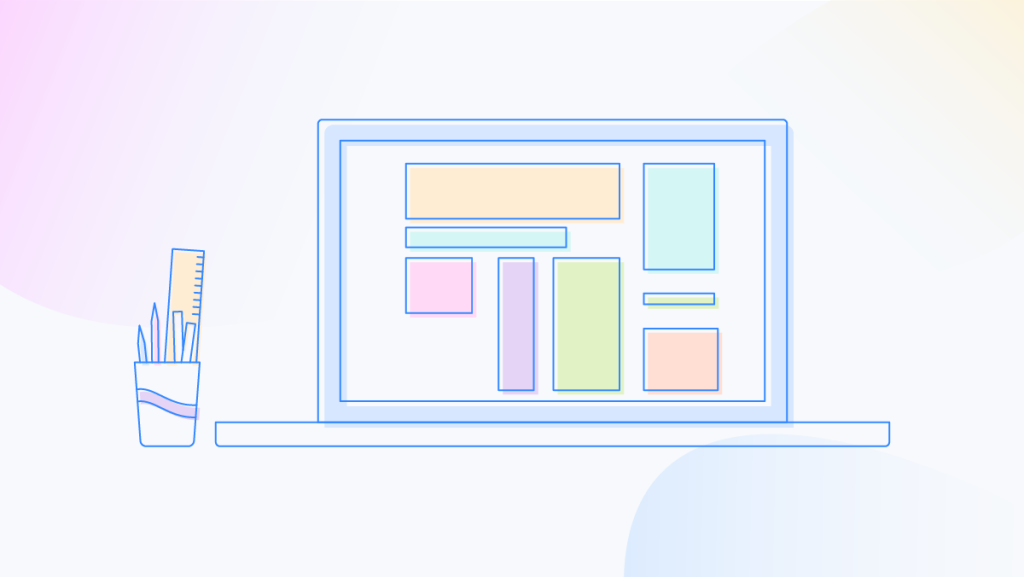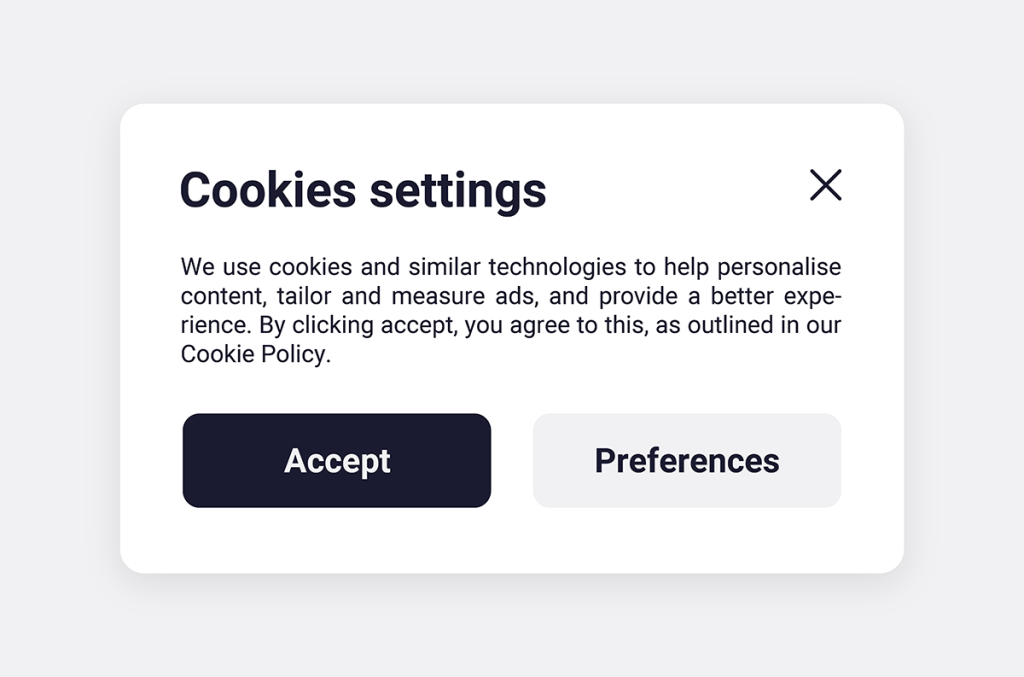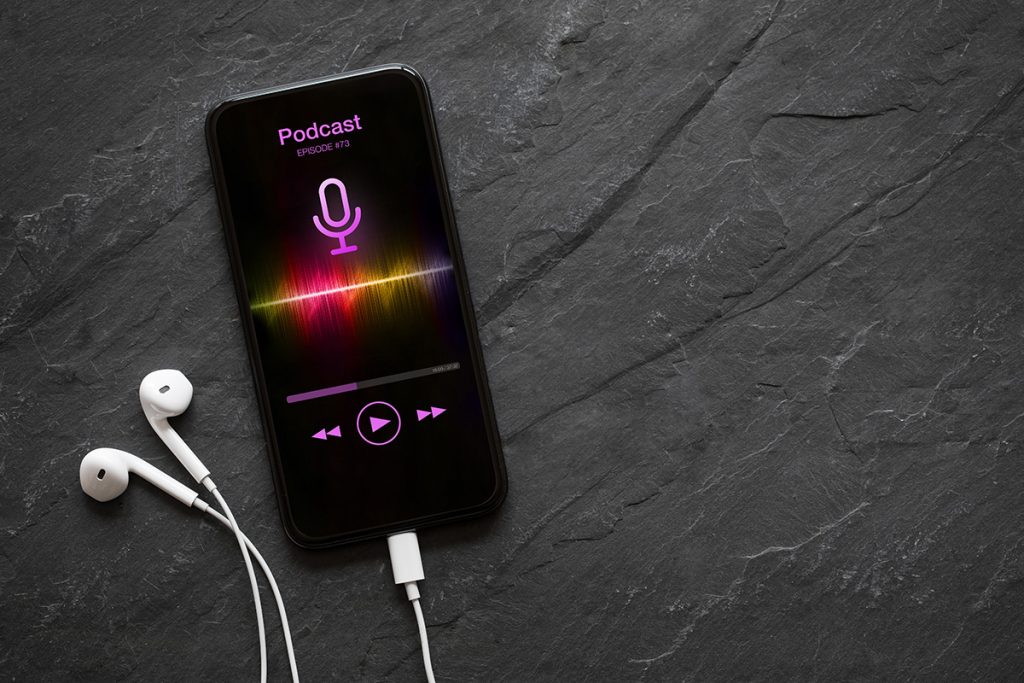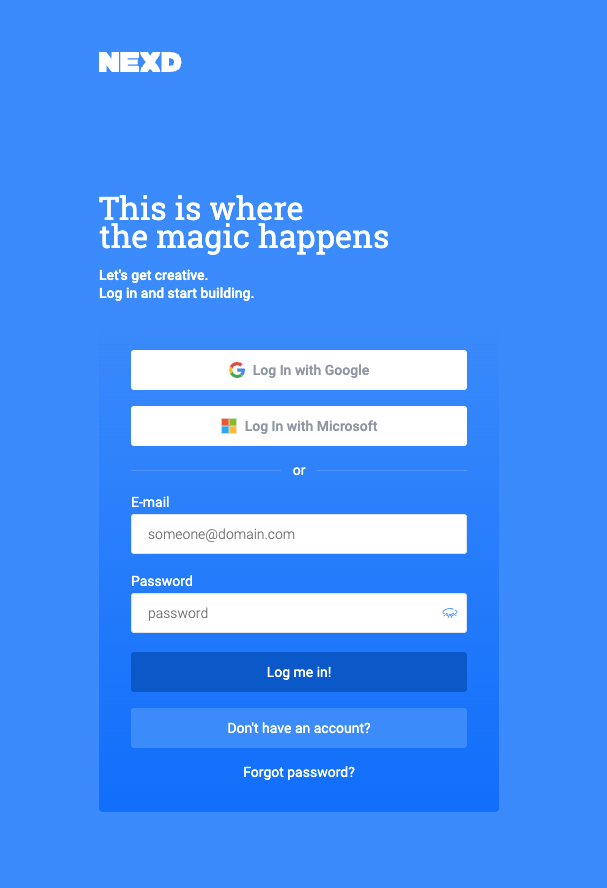The Different Types of Programmatic Buying and Targeting Methods
Programmatic advertising is a technology-driven approach that streamlines the buying and placement of digital ads. Instead of the traditional manual approach, programmatic buying relies on algorithms and data to make the ad-buying process more efficient.
Programmatic ads can be in the form of videos, images or rich media (moving elements). They can be seen on various websites online and they come in many placement sizes. Most often you will see square or rectangular ad placements in the header, in the sidebar or in the middle of the text on websites you visit.
Now, programmatic buying isn’t a one-size-fits-all deal. There are different methods within it, each serving specific purposes. This article breaks down these methods and explores how advertisers can target their audience.
This blog will cover:
- What is programmatic advertising
- Who uses programmatic advertising?
- Benefits of programmatic advertising
- The 4 different types of programmatic buying
- Examples of programmatic advertising platforms
What is programmatic advertising?
Programmatic advertising is an auction-based advertising format that enables brands to target specific audiences in real time. It considers technical and behavioral factors like audience data, devices, timing, frequency, and creative placements to deliver highly relevant ads to users.
In programmatic advertising, ad inventory buying and selling is done in milliseconds through automated auctions, often facilitated by ad exchanges. The entire process is data-driven, using information about users and their online behaviour to decide ad placements.
Key components include Real-Time Bidding (RTB), Demand-Side Platforms (DSPs) for advertisers, and Supply-Side Platforms (SSPs) for publishers.

Programmatic advertising terms to know
Decoding programmatic ads can get confusing with all the technical talk. If you want to learn more basic in info about AdTech in general, refer here. For more advanced knowledge, this simple guide will help you to know more.
- Ad Exchange:
A digital marketplace where publishers can sell ad inventory, and advertisers can bid on and purchase ad impressions in real-time.
- Ad Inventory:
Website or app space available for displaying ads on a publisher’s site.
- Ad Impressions:
A user’s exposure to an advertisement several times.
- Ad Creative:
The visual and textual components of an ad, including images,video, copy, and any interactive elements.
- Retargeting (or Remarketing):
Retargeting means showing ads to users interacting with a brand’s website or app.
- Frequency Capping:
Limiting the number of times a specific ad is shown to the same user within a given period.
- Bid Request:
A notification is sent from a publisher’s ad server to the ad exchange, signaling that an ad impression is available for auction.
- CPM (Cost Per Mille):
A pricing model where advertisers pay per thousand impressions of their ad, regardless of clicks.
- Demand-Side Platform (DSP):
A technology platform that allows advertisers to buy ad inventory across multiple ad exchanges using a single interface.
- Demand Source:
Entities, such as advertisers or DSPs, are looking to purchase ad inventory in the programmatic marketplace.
- Fixed Price:
An agreement where ad inventory costs are predetermined rather than subject to auction.
- Real-Time Bidding (RTB):
RTB is an auction-based system where advertisers bid on ad impressions in real-time, and the highest bidder can display their ad to a specific user.
- Supply-Side Platform (SSP):
Publishers use technology platforms to manage and sell their ad inventory to advertisers programmatically.
- Floor Price:
Advertisers must place a minimum bid in an auction for their ad impression to participate.
Who uses Programmatic advertising?
- Advertisers and Brands
Advertisers and brands across various industries leverage programmatic advertising to improve their online presence and connect with their target audience. Whether promoting products, services, or brand messages, programmatic advertising allows them to reach the right audience at the right time through automated and data-driven processes.
- Advertising Agencies
Advertising agencies act as strategic partners for businesses looking to promote their products or services.

With programmatic advertising, agencies can use automated technologies to streamline planning. It empowers agencies to optimize the buying process, precisely target audiences, and analyze campaign performance.
- E-commerce Platforms
E-commerce platforms use programmatic advertising to drive traffic, increase sales, and enhance user engagement. By leveraging programmatic technology, these platforms can target potential customers based on their online behavior, preferences, and purchasing history. This targeted approach contributes to more effective and personalized advertising campaigns.
Benefits of Programmatic Advertising
- Targeted advertising
Programmatic advertising allows advertisers to target their audience based on various criteria, such as demographics, interests, and online behavior. But it’s crucial to adjust strategies due to the changing use of third-party cookies, as discussed in this article.
For instance, a fitness apparel brand might leverage programmatic to target fitness enthusiasts with ads featuring new workout gear. It will maximize engagement and relevancy.
The challenge lies in adopting creative approaches to maintain relevance and engagement amid the shift away from third-party cookies.

- Cost-effectiveness
The automated nature of programmatic buying optimizes ad spending by eliminating inefficiencies in the traditional manual buying process.
The platform ensures efficient ad spend allocation by adjusting bids based on user behavior, minimizing costs, and maximizing returns.
- Enhanced audience reach
Programmatic advertising provides access to a vast inventory of ad spaces across multiple channels and websites.
It ensures the latest product launch or existing product reaches a relevant audience on specific websites and platforms.
- Improved ROI
Programmatic advertising can improve return on investment by eliminating guesswork and providing real-time data and sophisticated algorithms.
Data-driven adjustments allocate resources to the most effective strategies based on campaign performance.
- Enhanced transparency
Using programmatic advertising gives advertisers a clear view of the ads they buy and the audience they aim for. It means they can monitor their ads’ performance, manage their budget wisely, and adjust their campaigns in real time for better results.
Plus, less reliance on humans reduces the chance of making mistakes. The automated system helps reduce errors, which makes digital advertising more efficient and accurate.
- Ad fraud prevention
The advertising industry has grappled with unethical practices, with publishers using deceptive practices that mislead advertisers.
Thanks to Programmatic advertising, it includes measures to combat ad fraud. Advanced fraud detection tools, ad verification services, and real-time impression analysis help identify and eliminate fraud. The tools block fake bot traffic and certain types of ads to make sure everything is fair.
The 4 different types of programmatic ads
Now that we’ve looked at what programmatic advertising is and its benefits, let us take you through the four main programmatic deal types:
Preferred/direct deals:
Advertisers can choose spots with specific publishers and agree on terms before they go live on private marketplaces or for real-time auctions. This is also known as spot buying since you pay a fixed price for a specific ad space. Preferred deals usually have the highest price for placement in programmatic and are generally reserved when targeting a very specific or high-net-worth audience. The CPM here has a fixed price.
Open Auction/Exchange:
Sellers give open access to their inventory, and buyers can buy ad spaces through real-time bidding. Through the open auction, it is possible to purchase the cheapest inventory in programmatic advertising; however, the downside is not having clarity on exactly which sites and placements you are buying. Publishers can use open auction data to evaluate the relevance of their inventory.
Private marketplace (PMP):
Next up on our list of programmatic buying types is the private marketplace- the programmatic marketplace with premium ad spots. It includes websites like Forbes and Entrepreneur with high-price advertising spaces. It requires contacting the publisher for a specific deal. The placements set the floor price here, meaning you can’t win this placement in the auction if you’re bidding under that amount.
Programmatic guaranteed:
Advertisers take the traditional route, directly connect with publishers, and set a minimum spend with that specific advertiser for a fixed period. It doesn’t involve bidding and depends entirely on the terms negotiated between advertisers and publishers.
Are Programmatic Guaranteed vs Automated Guaranteed the same?
Programmatic Guaranteed and Automated Guaranteed are different things.
Programmatic Guaranteed involves purchasing inventory impressions with guaranteed delivery. Here, the buyer selects the audience and impressions for bidding, using a Deal ID to sell the inventory and showcase ads on the website.
Automated Guaranteed, aka Automated Direct and Automated Premium, streamlines the process that used to be manual in direct deals. It facilitates negotiation between a buyer and seller to secure guaranteed inventory and pricing. Once the deal is finalized, it seamlessly integrates into the publisher’s ad server through its API.
Read their differentiation for a better understanding.
| Aspect | Programmatic Guaranteed | Automated Guaranteed |
| Negotiation Process | Direct negotiation between advertisers and publishers. | Direct negotiation with an emphasis on automation. |
| Human Involvement | Substantial human involvement in negotiations. | Emphasizes automation to reduce manual intervention. |
| Terms Agreement | Advertisers and publishers agree on predetermined terms. | Agreement on terms with an emphasis on automated execution. |
| Control and Flexibility | Offers control and predictability but less flexibility compared to real-time bidding. | Strives for efficiency and reduces manual errors through automation, balancing control and flexibility. |
| Execution Automation | Involves automation in executing the agreed-upon terms using programmatic technology. | Emphasizes automation throughout the negotiation, execution, and delivery processes. |
| Efficiency Focus | Focuses on providing control and predictability in programmatic ad buying. | Prioritizes efficiency by automating various stages of the direct deal process. |
Top 5 formats of Programmatic advertising
You can reach your audience using multiple programmatic advertising channels, including
- Display advertising
Display ads are rectangular (mostly) visual banners or images that appear on websites at the page’s header, sidebar or footer. They can be static or interactive, catching users’ attention on various web pages.
- Native advertising
Native ads blend seamlessly with a website’s content, matching its look and feel. They aim to provide a non-disruptive and more integrated user experience.
They come in various formats, including in-feed ads (within social media feeds or content streams), sponsored content (articles or videos created by advertisers), and recommendation widgets (suggesting related content).
This format often sees higher click-through rates and better user interaction than traditional display ads.
- Video advertising
Video advertising involves delivering promotional content in a video format. Video ads come in various formats, including in-stream (played before, during, or after video content), out-stream (standalone videos within a webpage), and social media video ads. They aim to captivate users with a more dynamic and immersive experience.
These ads can range from short clips to longer narratives and are presented on various digital platforms, including websites, social media, and streaming services.
- Programmatic audio
Programmatic audio advertising is a digital way of putting ads in audio content like podcasts, digital radio, and music streaming.

It uses innovative technology to automatically sell and place ads in audio content, like how ads appear on websites.
With this, advertisers can easily buy targeted ads from big audio publishers using one system, and these ads reach people on computers, phones, and tablets. Programmatic audio ads let advertisers target specific digital audiences based on things like time, location, and format, and they can even show ads again to people who listened before.
It’s like a high-tech way to ensure the right people hear your ads while they enjoy their audio content.
- Digital Out of Home advertising
DOOH ads are displayed on digital screens in physical locations like billboards, airports, or shopping malls. They provide dynamic and eye-catching visuals. The popularity of this advertising type is primarily due to its ease of installation and high reach potential – meaning that many people can view it very quickly.
Examples of Programmatic advertising platforms
Programmatic advertising platforms are technology-driven solutions facilitating automated buying and selling of digital ad inventory. Here you can find the full-list of well-known programmatic buying platforms:
- Mediasmart
- Google Ads
- Adobe Advertising Cloud
- DV360
- Amobee
- Xandr Invest (formerly AppNexus)
- The Trade Desk
- And many more…
Get started with Programmatic advertising with Nexd
Programmatic advertising leads to accurate audience targeting, higher ROI and conversion rates. It has already become an essential part of advertising strategy, and it should be yours too if you want to access premium ad campaigns and rates.
Plus, getting started is easier than ever. With a creative ad management platform like Nexd, marketers can build digital ad campaigns that are effective and efficient.
Nexd platform enables the creation of programmatic rich media ads in a lightweight and cost-effective manner, maximizing ad performance.
Visit Nexd.com to get started with programmatic advertising today!

